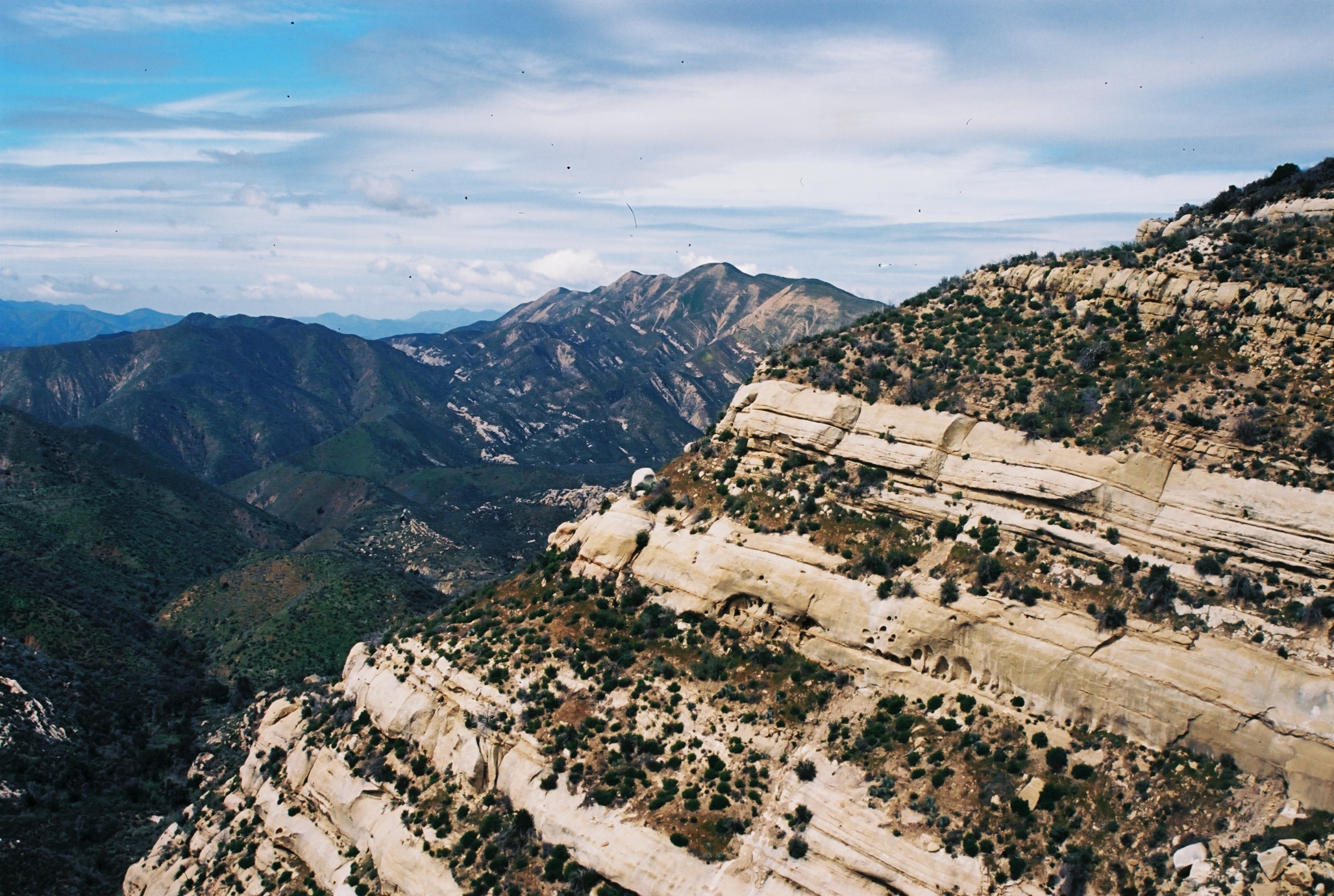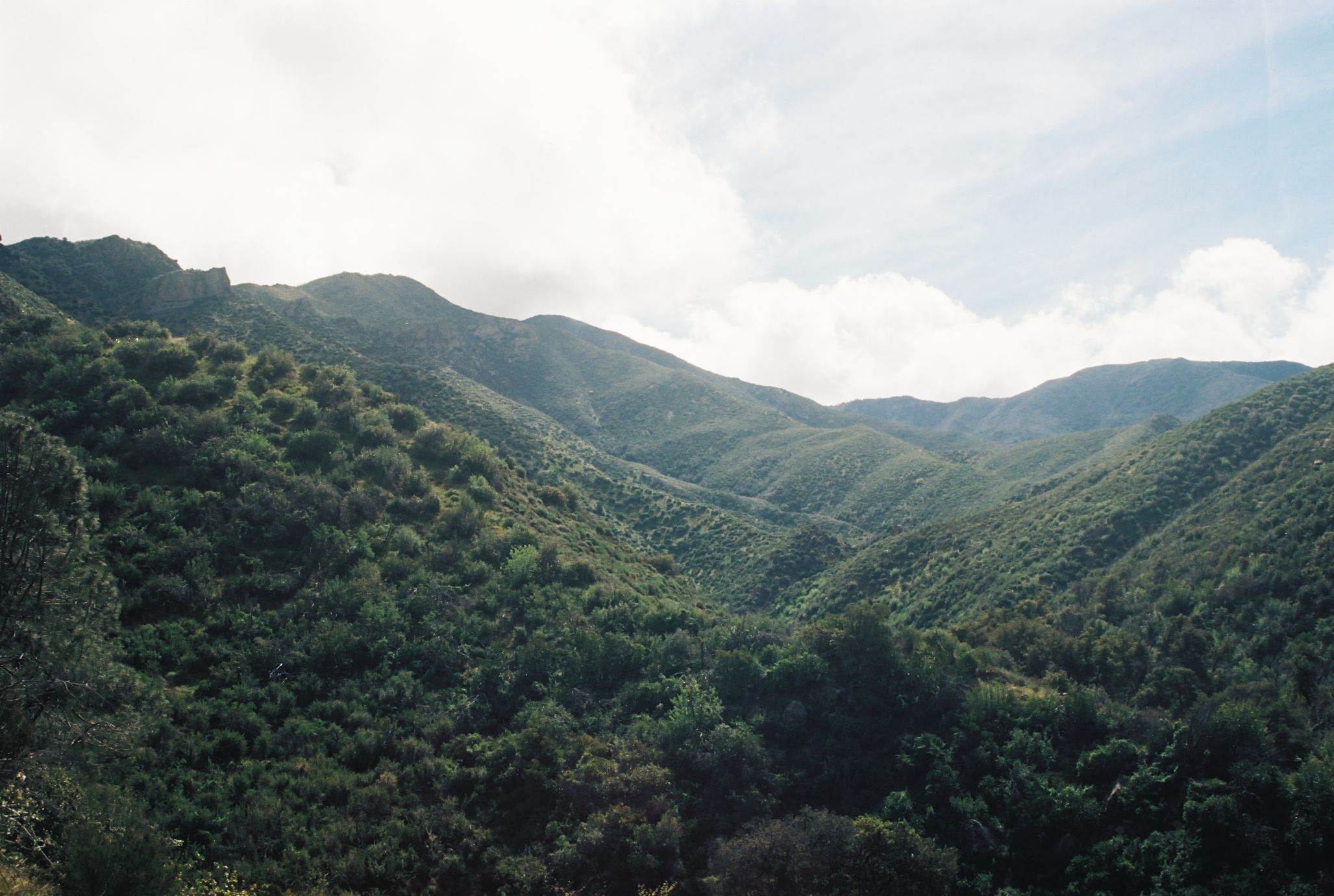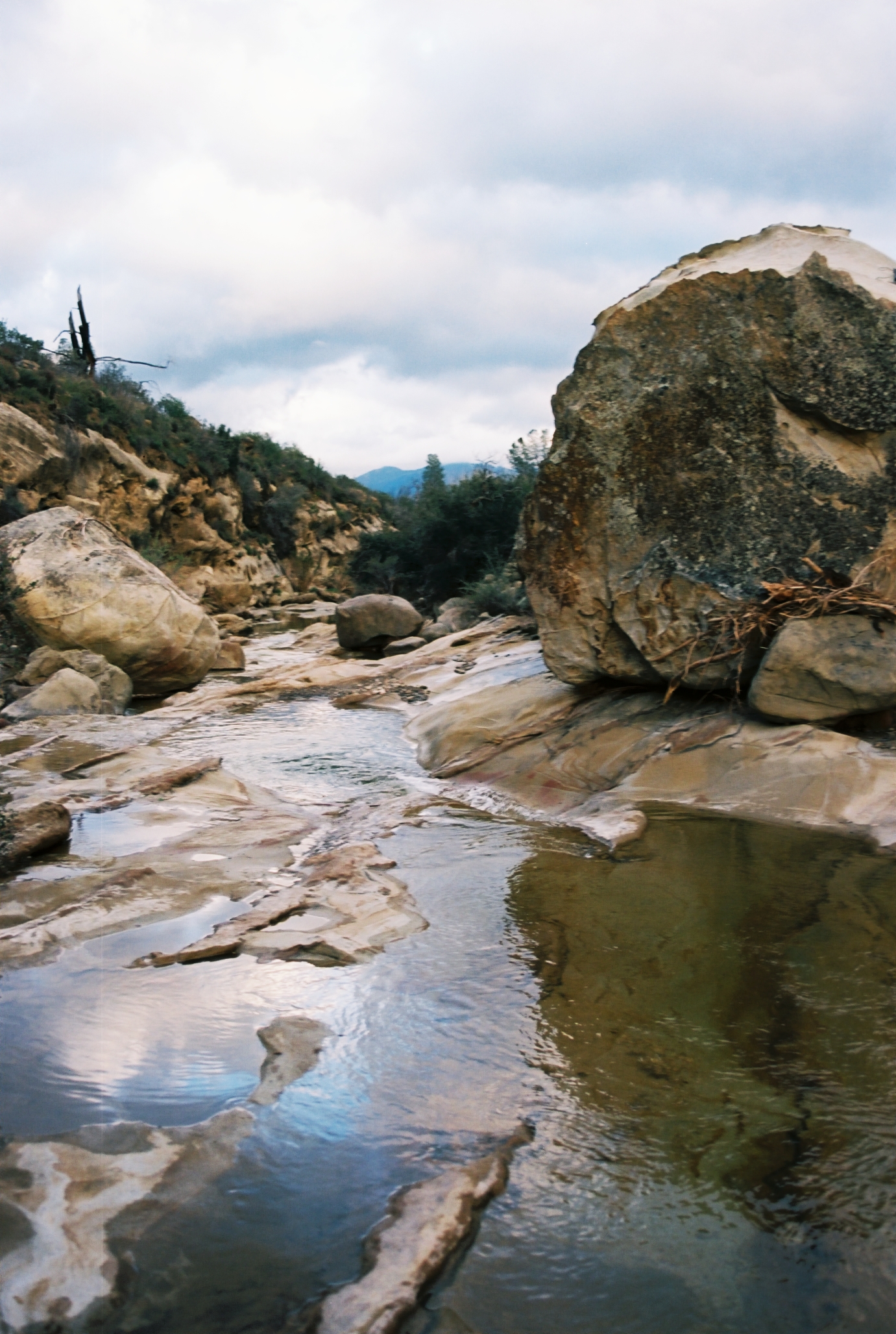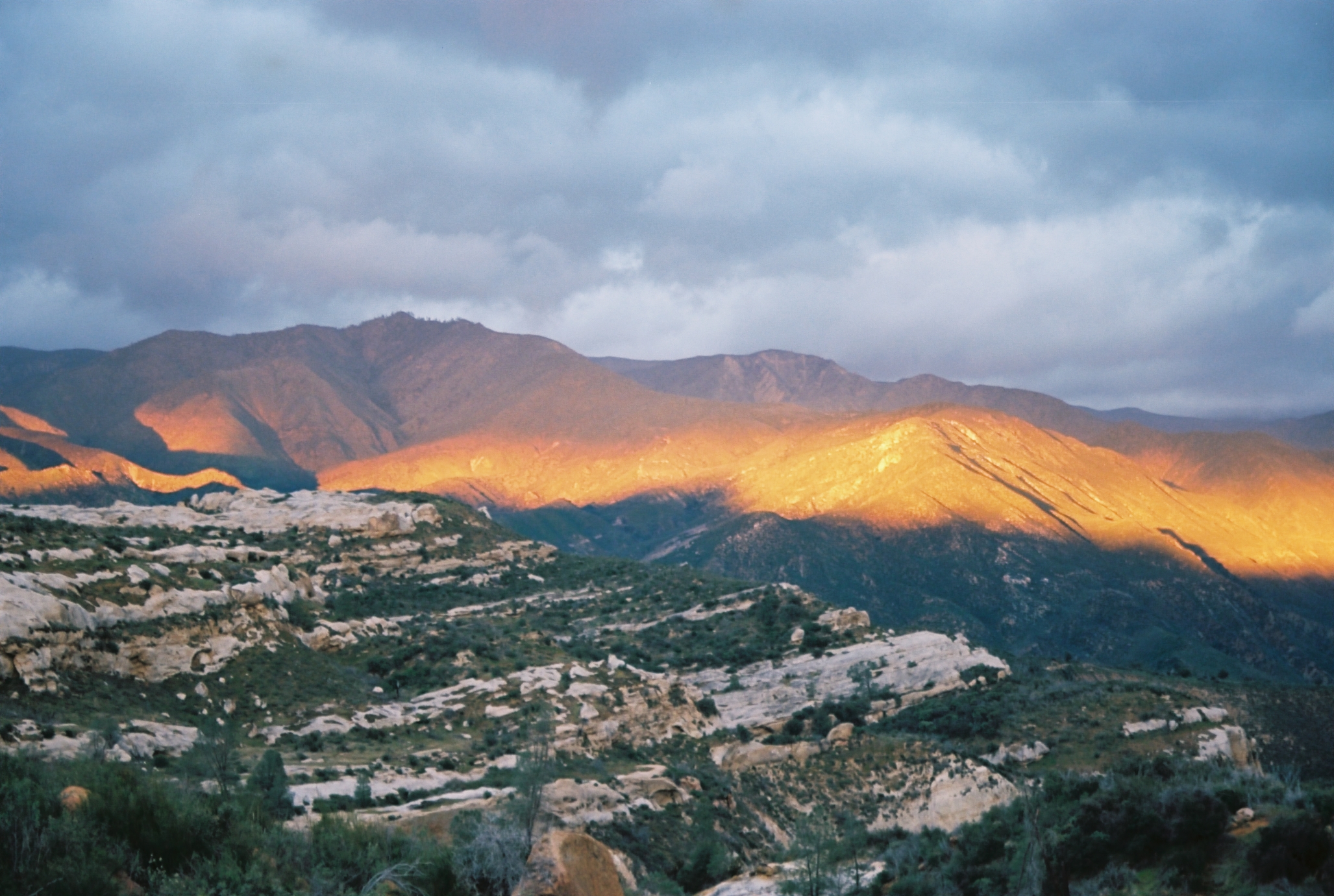White Ledge–Hurricane Deck Loop for the Weekend Warrior
An Overnight Not For the Faint of Heart, In the Heart of the San Rafael Wilderness

Spring has certainly sprung in the San Rafael Wilderness. For the adventurous weekend warrior or the more leisurely multi-day traveler, the classic loop traveling from Manzana Narrows to White Ledge back down through Lost Valley is the perfect way to experience arguably some of the most beautiful terrain in all of California at its seasonal height. Clocking in at almost the length of a marathon, it’s not exactly the easiest or shortest of all traverses, but if you can spare the time, you will be immensely rewarded.
The hike begins at Nira Campground. The first seven miles are a well-trodden route along the scenic Manzana River Valley. You will certainly see other people here on a spring weekend; on a late March trip, for example, all available sites were occupied from Fish Camp (2.7 miles) all the way to Manzana (6 miles). If you’re lucky, you will also see many local residents of the wilderness, like Arroyo toads, through whose home the trail bisects. Spring will bring flowers like the western peony, Indian paintbrush, yerba santa, and elegant clarkia. From Manzana, the trail zigzags up and then back down to meet a lush and narrowing portion of the creek. Manzana Narrows, the most spacious, prettiest, and usually most popular camp up to this point, features four sites set aside a small but dramatic set of rocky waterfalls with an inviting, frigid pool, plus a luxurious latrine sometimes occupied by, shall we say, impolite swarms of bees.

Beyond here, the terrain changes noticeably, as the Narrows give way to scenic views of the crest of White Ledge plateau and the mountainous rise of the San Rafaels. Beyond the river, the sun intensifies, and the fragrance of wildflowers, too. After half a mile from the campground, you come to a junction, where you have the option to head up to Big Cone Spruce or even further to McKinley Peak. Stay left and begin the switchbacks up almost 1,000 feet, underneath a sprawling curvature of sandstone.
White Ledge is an amazing place, easily one of the most beautiful on all the Los Padres. A mystical feeling surrounds this miraculous maze of white rocks, ghost pines, and meadows made of Miocene sandstone millions and millions of years in the making. This is the eastern Hurricane Deck, where its sandstone skeleton is exposed in slanting, sloping, striated strips and shelves, surreal and even spooky. Gentle streams runs down the plateau, to the Manzana on one side all the way into the Sisquoc watershed on the other. An abundance of wildlife, quite musical in the night, make this their home. It is a special, sacred place; leave it cleaner than you found it.

There are two camps in White Ledge Canyon. The first, Happy Hunting Ground, at 10.7 miles from the trailhead, is a very nice little site right along the trail near a small bend in the stream, with lovely shelves of rock as your backdrop. Continue downward to White Ledge Camp at 12 miles from the trailhead, a paradisiacal nook near a creekside whirlpool underneath dramatic rock formations. At either camp, you will have ample opportunities to explore the sandstone further or relax by the creek.
On your final day, you will hike back 13.2 miles to Nira Campground, with all but the final few miles almost completely absent of shade. The hike begins at the Hurricane Deck Trail turnoff adjacent White Ledge camp. The first 4.4 miles will likely be the least enjoyable of your journey, and certainly the brushiest. Expect chaparral to swat you in the face, slice you in the legs, and stab you in the thighs. Hurricane Deck is and will always be a challenge to traverse even on this, its easiest segment, and it is crucial and critical you know how to navigate. Fortunately, sweeping views of the Sierra Madre Mountains and hopefully a nice breeze make this leg more bearable.
At the Vulture Spring turnoff, views open up to unparalleled vistas of Hurricane Deck, Sulfur Spring Canyon, and San Rafael Mountains. There is no place quite like this stunning setting and no hike quite like descending through its many sandstone stripes. In spring, golden yarrow, owl’s clover, California prickly phlox, and tiny wooly sunflower illuminate your path. With a decline of just under 1,000 feet, this portion of the trail is often hard on the knees, so be forewarned.

You go down past grassy potreros to see the rocky interior of Lost Valley, which looks dry and foreboding even in spring. Vulture Spring, about three miles from the Hurricane Deck trail turnoff, is the only reliable water after White Ledge, and it is usually more of a drip or trickle than a healthy flow, but it had a tiny pool in late March. Just after it, a precarious rockfall demands you use immense caution in crossing.
Landing at Twin Oaks, the last descent into Lower Lost Valley is always a dreamy one. The pines sway, the hills are an unbelievable green, and on a recent visit, the usually dry Lost Valley creek was remarkably and happily flowing. Your final miles along the Manzana are easy and quiet, mercifully mellow and shady. Back at your car, you can mark off a prime spring experience in an otherworldly, beautiful portion of our backcountry.



